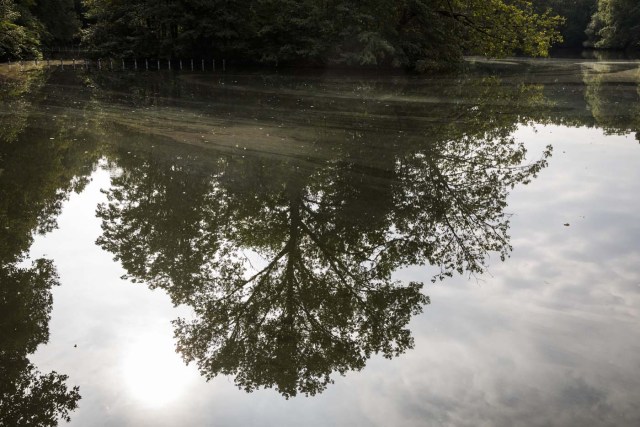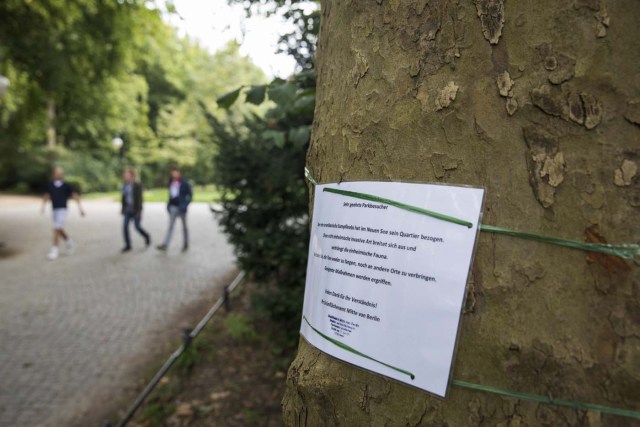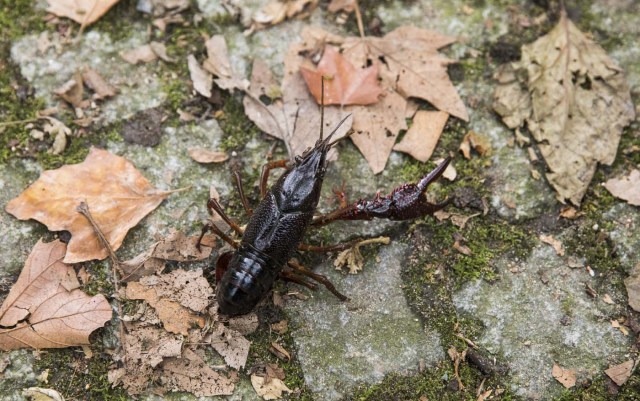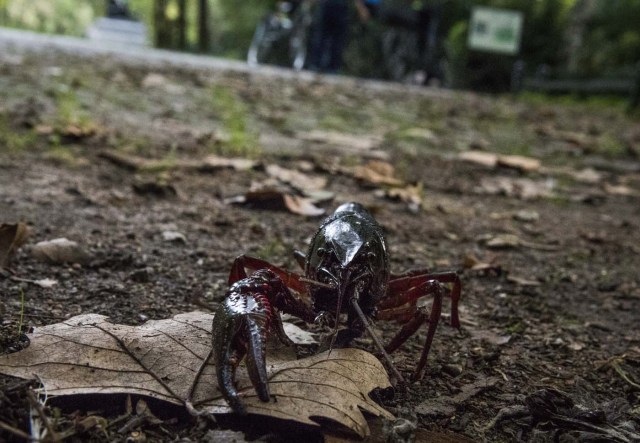
Desde hace unos días, unos cangrejos rojos corretean a sus anchas por el parque berlinés de Tiergarten haciendo las delicias de las personas que pasean por él, pero su voracidad preocupa sobremanera a los expertos, reseña AFP.
De entre 10 y 15 cm, el cangrejo de río americano, también conocido como cangrejo rojo, un deleite para el paladar de los amantes de los crustáceos, debería haberse quedado confinado en los criaderos.
No se sabe a qué se debe su presencia en el bosque de Tiergarten, lindante con la Puerta de Brandeburgo, la cancillería y grandes arterias comerciales de Berlín Oeste.
Katrin Koch, de la asociación ecologista Nabu, baraja la posibilidad de que los hayan soltado criaderos “porque ya no se interesan por ellos” o una superproducción de los “jóvenes” en explotaciones privadas.
– Devoran todo –
Otra posibilidad es que los acuariófilos hayan tirado crustáceos para deshacerse de ellos.
Y es que los aficionados “aprecian mucho (este tipo de cangrejos para sus acuarios), pero en su mayoría no por mucho tiempo”, explica Oliver Coleman, experto del Museo de historia natural de Berlín, mientras señala con el dedo un especimen de color casi burdeos que camina por el parque con sus grandes pinzas puntiagudas.
Estos crustáceos tienen un apetito voraz. “Se comen todas las plantas y en poco tiempo el acuario parece devastado”, añade.
Un apetito que no presagia nada bueno y su velocidad de reproducción tampoco.
En condiciones normales, estos cangrejos suelen mantener la cabeza bajo el agua por lo que viven en estanques y lagos.
Las abundantes lluvias de este verano han alterado la cantidad de hidrógeno del agua y han podido destruir sus madrigueras, obligándolos a buscar un nuevo hábitat, explica Dirk Ehlert, portavoz de la dirección de asuntos medioambientales de la ciudad de Berlín.
“Ayer juntamos (…) unos cincuenta en el sector de Tiergarten”, explica, pero también fue visto en el sudeste y el norte de Berlín. La capital alemana está rodeada de lagos, ríos y bosques.
El cangrejo de río americano es originario de México y del sudeste de Estados Unidos y fue introducido en Europa con fines comerciales.
– Vector infeccioso –
Es considerado una especie invasiva y perjudicial porque puede afectar “negativamente a los ecosistemas acuáticos” en los que se implanta, afirma la asociación berlinesa Nabu.
No sólo se reproduce mucho sino que “come los huevos de peces y anfibios”, contribuyendo así a diezmar la fauna local, y además es portador de un champiñón mortal para sus pares europeos contra el que él está inmunizado, detalla la organización.
“Llevan la infección de estanque en estanque” y hay que “evitar absolutamente” que colonice los dos ríos berlineses: Esprea y Havel.
Para intentar frenar la propagación de los crustáceos en Berlín, las autoridades cuentan “ante todo con sus enemigos naturales”, como el zorro, el mapache o la anguila. De hecho se han introducido algunos ejemplares de este pez en los estanques de Tiergarten, explica Ehlert, que recuerda que “la captura de animales silvestres no está autorizada”. Se consideraría caza furtiva.
por Larissa RAUSCH/AFP

The recent proliferation of red swamp crayfish in Berlin, a species classified as invasive and harmful, worries specialists who warn about the damage it could cause to the ecosystems of the German capital. / AFP PHOTO / Odd ANDERSEN

The recent proliferation of red swamp crayfish in Berlin, a species classified as invasive and harmful, worries specialists who warn about the damage it could cause to the ecosystems of the German capital. / AFP PHOTO / Odd ANDERSEN

The recent proliferation of red swamp crayfish in Berlin, a species classified as invasive and harmful, worries specialists who warn about the damage it could cause to the ecosystems of the German capital. / AFP PHOTO / Odd ANDERSEN

The recent proliferation of red swamp crayfish in Berlin, a species classified as invasive and harmful, worries specialists who warn about the damage it could cause to the ecosystems of the German capital. / AFP PHOTO / Odd ANDERSEN

The recent proliferation of red swamp crayfish in Berlin, a species classified as invasive and harmful, worries specialists who warn about the damage it could cause to the ecosystems of the German capital. / AFP PHOTO / Odd ANDERSEN

